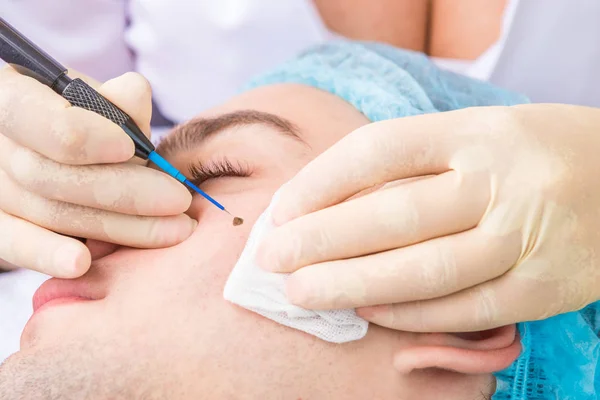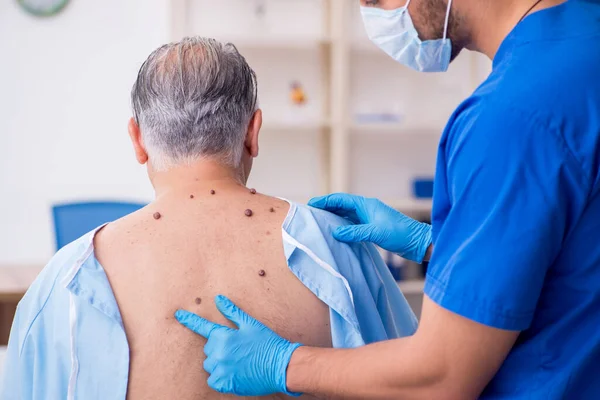In the realm of dermatology, the subject of mole removal stands as a prominent and nuanced area that deserves meticulous exploration. While moles, medically referred to as nevi, are often benign, their presence can evoke a spectrum of concerns ranging from cosmetic to health-related.
This comprehensive guide aims to shed light on everything you need to know about mole removal, encompassing the intricacies of the procedure, potential risks, and the broader context of when and why it becomes a consideration.
What Exactly is a Mole?
To embark on a journey through mole removal, one must first grasp the nature of moles. Moles are clusters of pigmented cells that commonly manifest as small, dark spots on the skin. These cells, known as melanocytes, are responsible for producing melanin, the pigment determining our skin color.

The Diverse Types of Moles
Not all moles are created equal. Dermatologists categorize moles into various types based on their characteristics.
There are several different types of moles, including:
- Common moles: These are the most common type of moles. They are usually small, brown, and have a smooth, round shape.
- Congenital moles: These are moles that you are born with. They are usually larger than common moles and can be irregular in shape.
- Dysplastic nevi: These moles are larger than common moles and have irregular borders. They are also more likely to have multiple colors, such as brown, black, and pink.
- Spitz nevi: These moles are pink or red and have a smooth, round shape. They are more common in children and young adults.
If you have any concerns about a mole, it is important to see a dermatologist. They can examine the mole and determine if it is benign or cancerous.
Indications for Mole Removal
Cosmetic Concerns
For many individuals, the decision to pursue mole removal arises from cosmetic considerations. Moles situated in prominent or visible locations may cause self-consciousness or become a source of aesthetic discomfort. In such cases, removal becomes a personal choice aimed at enhancing one’s appearance and self-esteem.
Medical Necessity
Beyond cosmetic motives, medical considerations often dictate the need for mole removal. Suspicious changes in a mole’s size, shape, or color may raise alarms regarding potential malignancy. Dermatologists frequently advocate for removal when a mole exhibits characteristics indicative of skin cancer, providing a preemptive approach to addressing potential health risks.
The Mole Removal Process
Initial Assessment
Before diving into the removal procedure, a thorough assessment of the mole’s characteristics is imperative. Dermatologists evaluate factors such as size, color, and irregularities to determine the most suitable approach. In cases where malignancy is suspected, additional diagnostic measures, including biopsies, may be recommended.
Excision Techniques
Several techniques exist for mole removal, with excision being a prevalent method. This procedure involves cutting out the mole and stitching the incision site. Laser removal, another option, employs focused laser beams to break down the pigment within the mole. Each technique is tailored to the specific attributes of the mole and the patient’s preferences.
Recovery and Post-Removal Care
Post-removal care is pivotal to ensure optimal healing and minimize scarring. Dermatologists typically provide detailed instructions, encompassing wound care, sun protection, and the importance of regular follow-ups to monitor the healing process.
Here are some additional things to keep in mind about mole removal:
- The cost of mole removal will vary depending on the size, location, and complexity of the procedure.
- Mole removal is typically an outpatient procedure, which means you can go home the same day.
- Most people experience minimal discomfort after mole removal. However, you may experience some bruising, swelling, or pain.
- It is important to choose a board-certified dermatologist or plastic surgeon to perform your mole removal.
Potential Risks and Complications
While mole removal is generally considered a safe procedure, it is not without potential risks. Scarring, infection, and allergic reactions to anesthesia are among the associated complications. Hence, individuals contemplating mole removal should engage in open discussions with their dermatologists to comprehend the personalized risks and benefits.
Home Remedies and Over-the-Counter Solutions
The internet is rife with purported DIY mole removal methods, ranging from apple cider vinegar applications to garlic paste concoctions. It is crucial to approach such remedies with caution. Mole removal is a nuanced process requiring professional expertise to mitigate risks and ensure efficacy. Over-the-counter solutions, while accessible, may not provide the precision and safety offered by a dermatologist’s intervention.
Embracing Diversity and Individual Choices
In the discourse on mole removal, it is essential to acknowledge and respect diverse perspectives and choices. Some individuals choose to embrace their moles as unique features, while others opt for removal as a means of empowerment. Understanding and respecting these individual choices foster a holistic approach to dermatological care.
What Experts Say
Mole removal is a common cosmetic procedure that can be performed by a dermatologist or plastic surgeon. The procedure is typically performed to remove moles that are large, raised, or in an area that is frequently rubbed or irritated. Here are some of the things that popular experts say about mole removal:
- Dr. Doris Day: “If you have a mole that is concerning you, it is important to see a dermatologist to have it checked out. Most moles are harmless, but some can be cancerous. Early detection and treatment of melanoma is key to a good prognosis.”
- Dr. Neil Sadick: “There are a number of different methods that can be used to remove moles, including shave excision, excision with suturing, and electrosurgery. The best method for you will depend on the size, location, and type of mole.”
- Dr. David E. Jones: “After your mole removal, it is important to follow your doctor’s instructions carefully. This may include keeping the area clean and dry, applying ice packs to reduce swelling, and avoiding strenuous activity. It is also important to watch for any signs of infection, such as redness, swelling, or pus.”
Conclusion
In the intricate landscape of dermatology, mole removal emerges as a multifaceted consideration encompassing aesthetic desires, medical necessities, and personalized choices. Navigating this terrain requires a collaborative effort between individuals and their dermatologists, ensuring that informed decisions align with both cosmetic and health-related goals.
Armed with a nuanced understanding of the process, potential risks, and the broader context, individuals can approach mole removal with confidence and a comprehensive awareness of what it entails.
Read Also | When Lumps Get Too Many: Navigating Multiple Lipomatosis Syndrome Radiology
Note: This article is written based on scientific evidence found by the 247newsroundtheworld.com team. Sources are duly referenced with keywords hyperlinked to source websites and are clickable for reference.
Last Updated on November 28, 2023 by 247 News Around The World






